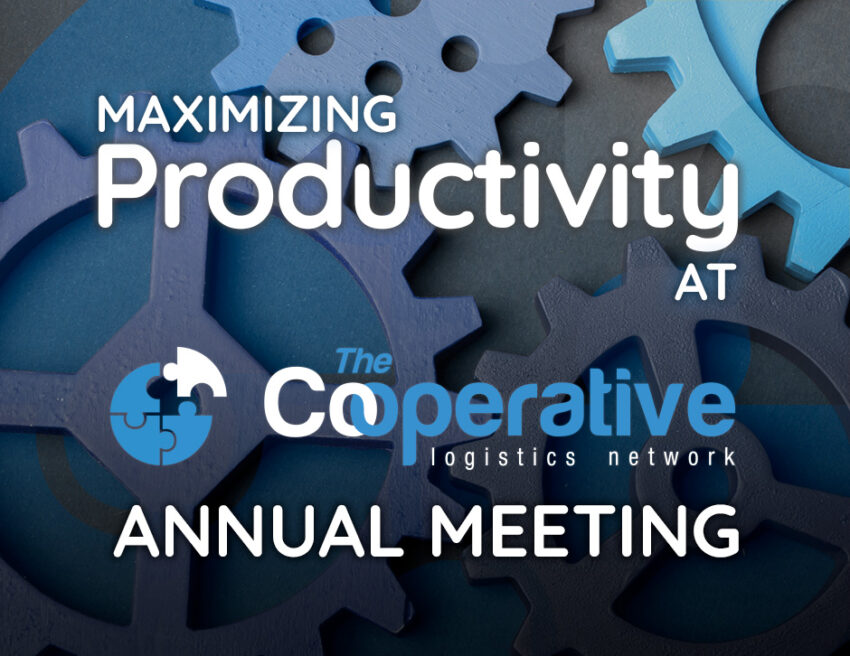The Cooperative Logistics Network’s freight forwarders conference is a cornerstone event that unites international logistics companies, offering a unique opportunity for face-to-face discussions about future collaboration projects. The potential value of these gatherings is immense, but how do you measure the productivity of your participation as a member of one of the leading logistics networks? Here are key metrics and strategies to ensure that you maximize your time and resources at the event.
Post-Meeting Review: Reflecting on Goals and Outcomes After Attending The Coop’s Freight Forwarders Conference
After attending the Coop’s Annual Meeting, it’s essential to conduct a comprehensive review of your goals and outcomes. Start by asking yourself: Did you meet or exceed your goals? If your goals were not met, it’s crucial to delve into the reasons behind this shortfall. Understanding the gaps between your expectations and results can provide valuable insights for future improvements. Consider the following:
- Realism of Goals: Were the goals you set realistic and attainable within the scope of the meeting?
- External Influences: Were there external factors that impacted your outcomes, such as unexpected market shifts or logistical challenges?
- Opportunities for Improvement: What could you have done differently to achieve better results? Could adjustments in your approach, preparation, or strategy have led to more successful outcomes?
Engaging in this reflective process will not only help you better prepare for future events but also enhance your strategic planning and execution.
Assessing the Value of Contacts: Quality Over Quantity
Not all contacts made during the freight forwarders conference will yield the same level of benefit. Some will lead to immediate business opportunities, while others may be more about building long-term relationships. Here’s how you can assess the value of your contacts:
- Prioritize Quality: Focus on the quality of the connections rather than sheer numbers. A few strong, actionable contacts are far more valuable than a large number of weak ones. High-quality contacts are those who have the potential to significantly contribute to your business goals, whether through direct business opportunities, strategic partnerships, or valuable industry insights.
- Categorize Contacts: After the meeting, categorize your contacts into tiers based on their potential business value. This can help you prioritize your follow-up actions. For example:
- Tier 1: Contacts with immediate business opportunities.
- Tier 2: Contacts with medium-term potential, requiring further development.
- Tier 3: Contacts for long-term relationship building and future opportunities.
- Develop a Follow-Up Strategy: Create a clear, personalized follow-up strategy for each tier of contacts. Sending tailored emails or scheduling follow-up calls within a week of the meeting can help solidify these connections. Demonstrating your commitment and professionalism through effective follow-up strategies makes a positive and lasting impression on your contacts.
Evaluating Meeting Results: Immediate and Long-Term Perspectives
Assessing the results of the meeting requires looking at both qualitative and quantitative outcomes. Here are some key aspects to consider:
- Immediate Outcomes: Measure tangible results such as new contracts signed, deals closed, or specific commitments made during the meeting. These immediate outcomes are easy to track and provide a clear indication of the meeting’s productivity. For instance, if you secured a significant contract or partnership, it’s a strong indicator of success.
- Long-Term Potential: Evaluate the long-term potential of the relationships formed. Some connections might not yield immediate results but could be valuable in the future. Consider how these relationships align with your long-term business goals. A contact who provides valuable industry insights or opens doors to new markets can be an invaluable asset over time.
- Feedback and Insights: Gather feedback from your team and other attendees. What insights did you gain from the meeting? What industry trends did you notice in the discussions? Understanding these qualitative aspects can help you identify emerging opportunities and challenges in the logistics industry. Team feedback can also highlight areas where you excelled and areas needing improvement.
Continuous Improvement: Learning from Best and Worst Actions
To ensure continuous improvement for future meetings, it’s essential to identify what worked well and what didn’t. Here are some strategies to consider:
- Document Best Practices: Identify the actions that led to the most productive outcomes. Was there a particular presentation or approach that resonated well with potential partners? Document these best practices for future reference. For example, if a specific presentation format or networking strategy was particularly effective, consider using it again in future meetings.
- Identify Areas for Improvement: Acknowledge actions that didn’t work as well as expected. Was there a session that didn’t yield the expected results? Analyze why and think about how you could approach it differently next time. This might involve refining your pitch, adjusting your presentation style, or choosing different networking strategies.
- Establish a Feedback Loop: Set up a regular feedback loop with your team. Regular debriefing sessions can help capture what went well and what needs improvement. Encourage open and honest communication within your team to ensure that all perspectives are considered. This collaborative approach can lead to more comprehensive insights and better strategies for future meetings.
- Adjust and Adapt: Use the feedback to adjust your strategies for future meetings. Continuous learning and adaptation are key to success in the dynamic logistics industry. Stay informed about industry trends and be willing to experiment with new approaches. By being proactive and flexible, you can stay ahead of the competition and maximize the benefits of your participation in future meetings.
Conclusion
Measuring the productivity of your participation at The Coop’s Annual Meeting is crucial for maximizing the benefits of such a significant event. By setting clear targets, focusing on the quality of your contacts, evaluating both immediate and long-term results, and continuously improving your approach, you can ensure that you derive maximum value from your participation. Remember, success lies not just in attending these meetings but in effectively leveraging the opportunities they present. By following these strategies and metrics, you can enhance your meeting productivity and achieve greater success in the logistics industry.



